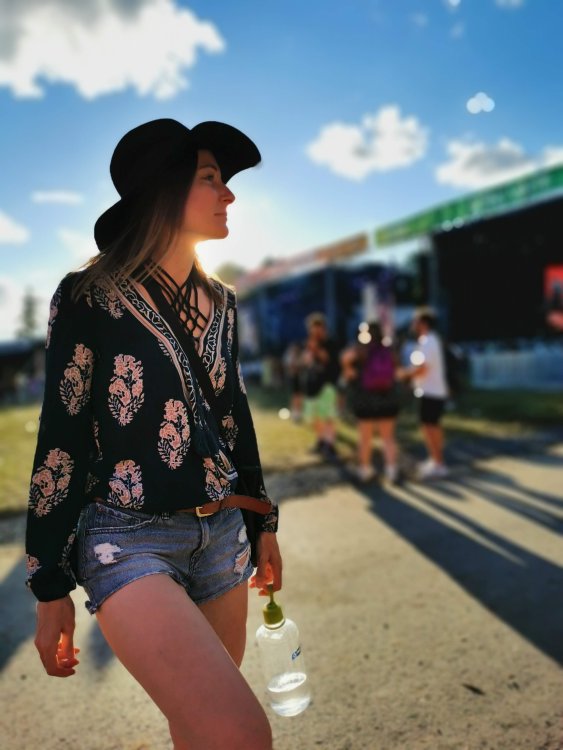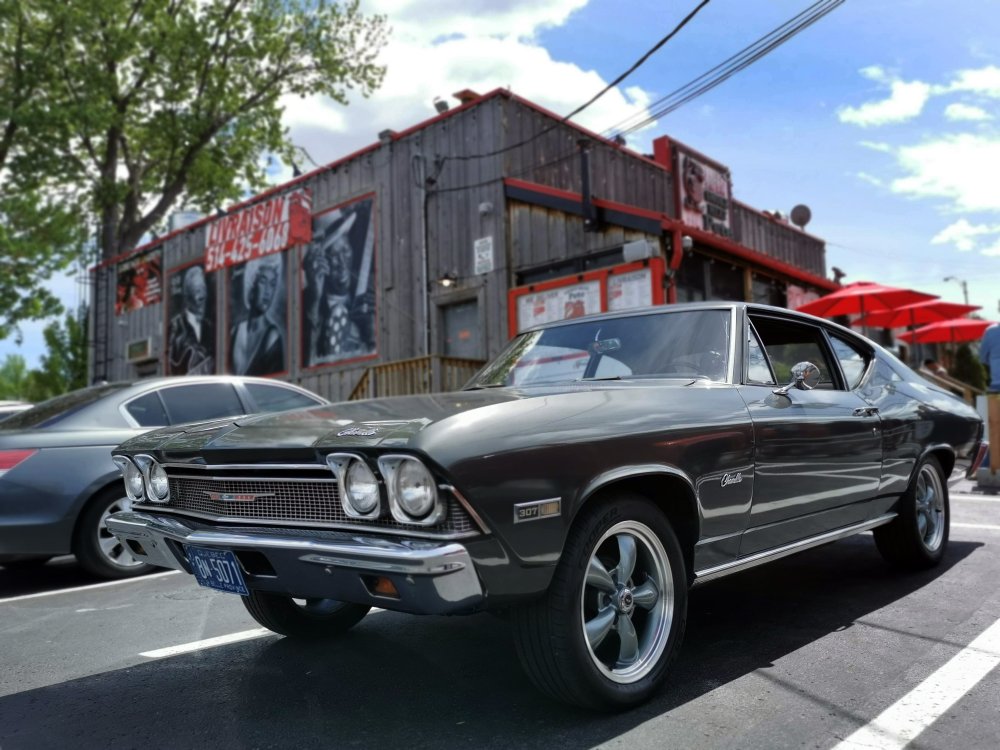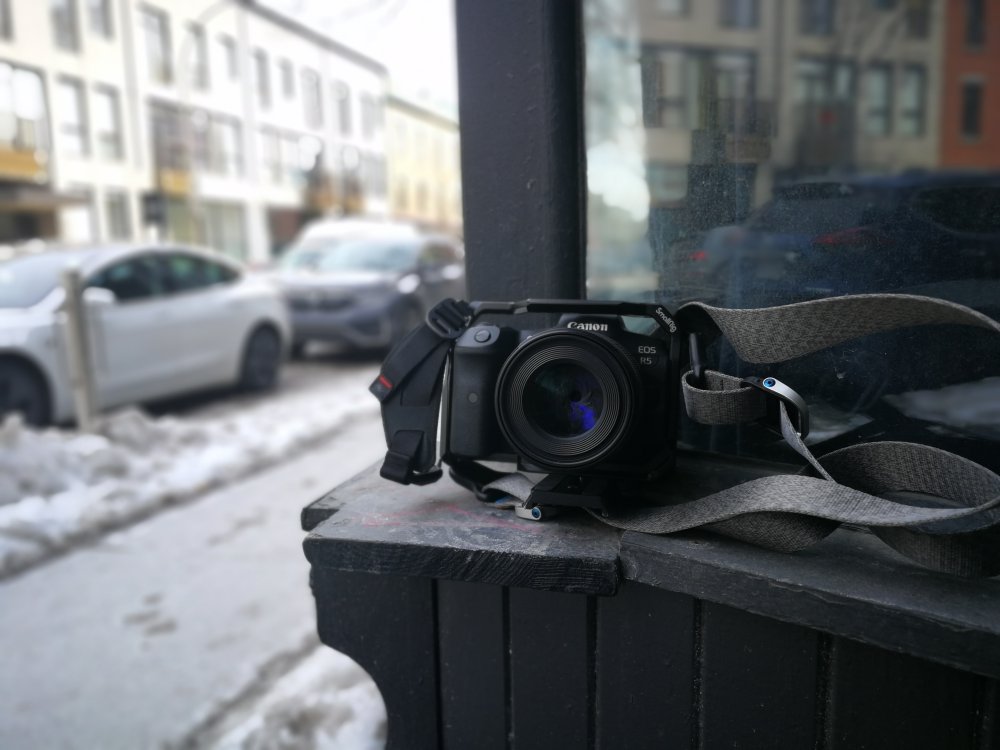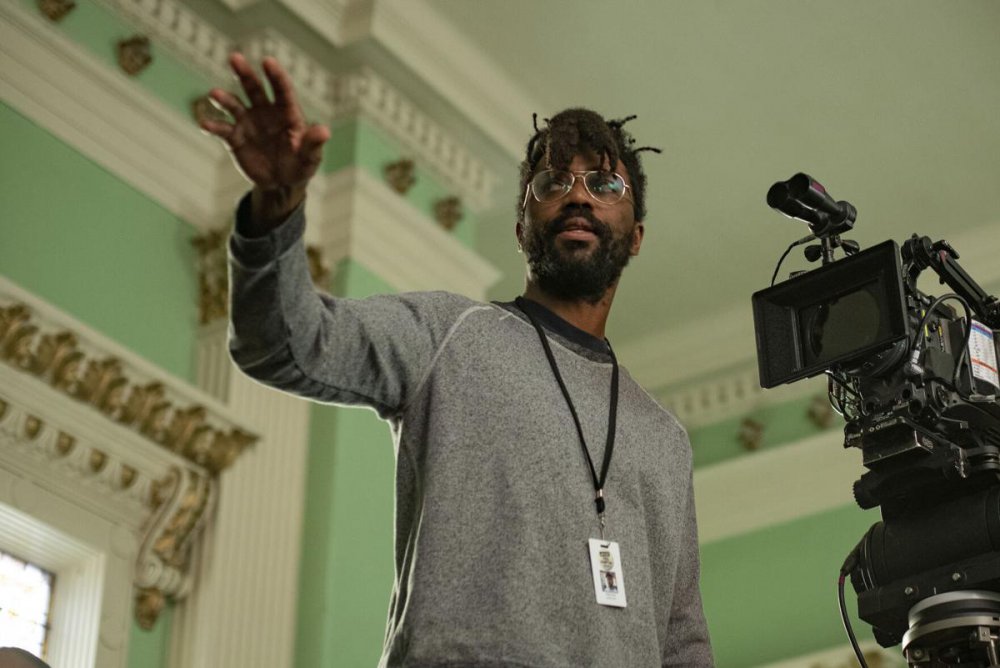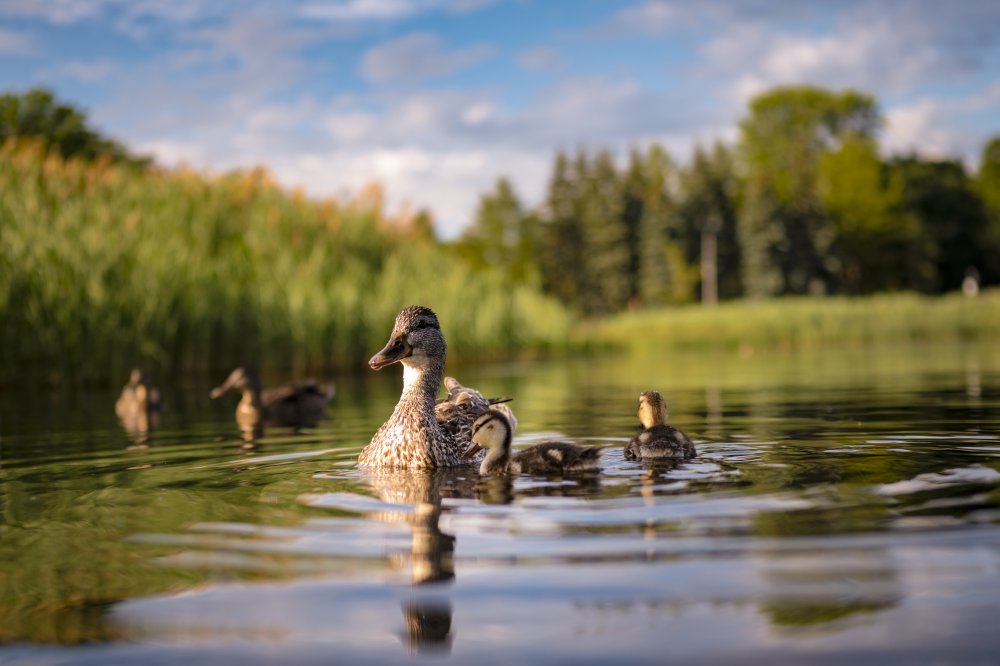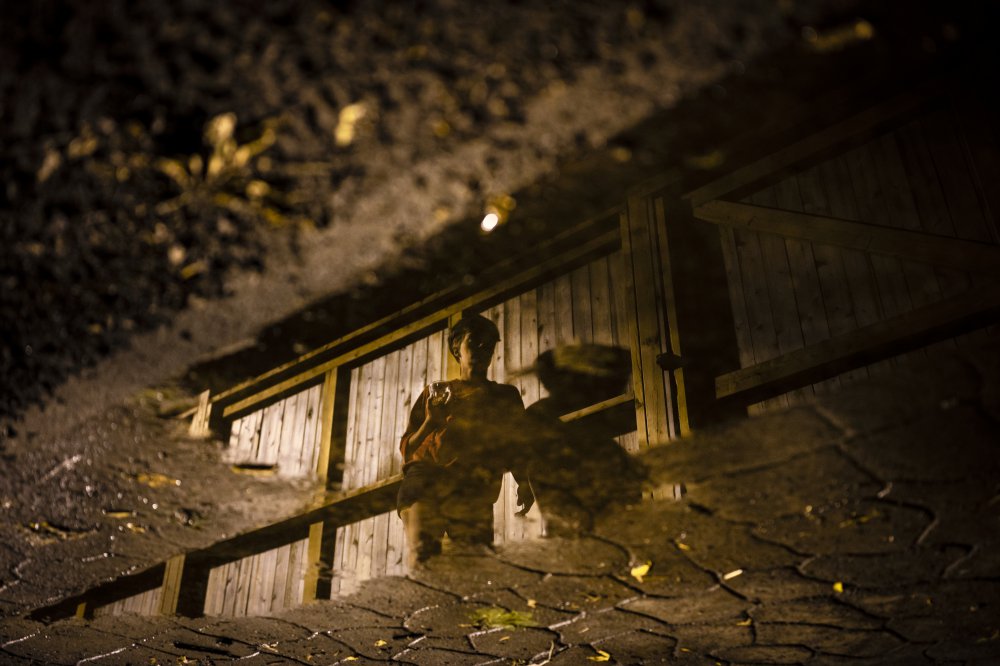
RawZion
Members-
Posts
30 -
Joined
-
Last visited
Content Type
Profiles
Forums
Articles
Everything posted by RawZion
-
Kye was right. The first two photos (horse, and girl tying ice skates) were shot with my Nikon Z6, the first with a Rokinon 85mm T1.5 Cine lens, the second with the Nikon Z 40mm (at f2.2). The other two (car outside restaurant, girl at festival wearing hat) were the Huawei P30. I like that you guys noticed different things about it. For me, the giveaway in the car shot is the clouds, but I think it got the DoF faked perfectly in that shot. Close, but as Kye said, no cigar on the girl with the hat at the festival. With a larger sensor and continuing neural networks this could tilt the other way soon though
-
I would love to try out those large sensor phones. It's pretty incredible already what my Huawei P30 (which I bought for $250 CAD) can do by guessing at focal distance and combining images from it's three lenses. What I'll often do on a recreational excursion is bring a longer prime for my Nikon Z6 (either an 85 or 50 usually) and use the smartphone for wide shots, where depth of focus can be deeper. I absolutely adore the in-body raw photo editing in the Nikon, and Adobe Photoshop Raw on the phone is a pretty annoying and terrible program, but I would imagine that software will advance quickly and that'll help further blur the difference between the two devices. We can't really fight change, I'm learning to use both. Here are some shots from each, I'm sure you'll be able to tell which are which, but I think you'll be surprised how similar they are.
-
Thank you so much for posting that firmware. I've been wanting the Z9, but have held back as I get by fine with my Z6. If I become much more prosperous in the future however, I would love to record raw internally in it (I have an Atomos NinjaV for my Z6 and it's just a terrible experience trying to get the HDMI cable to stay locked in, plus there are delays and crops and limits on frame rates)
-
I am certain that this closure is due to financial as opposed to ethical reasons, but I would be happy to support an industry of well-built quality tools built by well-paid specialists in democratic countries (like Japan, South Korea or Taiwan) instead of crap made by exploited serfs in China. $6000-$7000 for a Canon R5C or Nikon Z9 is a ton, but if it lasts ten years it's well worth it. Hopefully the companies make it worthwhile for their workers as well. Once again, I strongly doubt that the industry could survive an economy where people are satisfied with their purchases
-
It's great to have you and the blog back. Please stay very active shooting, both to keep up your creativity and morale but also because it's far more useful for the rest of us to have real-life situations than laboratory tests to learn from. Also it just looks cool to see what you get up to out there. And please keep up your picture profile research and development, you're the best out there. I use Pro-Log and Z-Log frequently, and your C-log for the Canon DSLRs was extremely useful too. Welcome back Andrew.
-
I'm very curious about what Andrew mentioned, that GPUs can't hardware accelerate 10 bit 422 footage. Is that only when it's compressed in-camera, or is there the same issue with Atomos-produced ProRes 10 bit 422 footage? Please don't say I have to buy your software to discover for myself (I bought a lot of your picture profiles and use them, they're great but this is just a one-question one-answer thing)
-
I hope this is a joke right? You buy Canon's expensive camera, and then need to spend at least a thousand extra to rig it up with another device that is really difficult to work with. I have a Ninja V for my Nikon Z6 and I'm pretty sure I'm going to sell it soon, as it's just so hard to deal with the HDMI cables, the crop factor, the delay, and the lack of 120 fps just for a slightly better image. The Atomos recorder is just really difficult to work with (super hard to get the gimbal to balance with the HDMI cable too). Regarding switching between camera modes though, the Nikon Z series knocked it out of the park. There's a little switch you flick to instantly go between video or still and the settings are completely different, and the camera remembers. So your shutter speed, picture profile, ISO etc. are completely independent. That's one thing Nikon really did right. Pushing their best modes to external is something they really did wrong.
-
The 14 bit RAW of the Canon 5d2 and 5d3 in Magic Lantern remain the best image quality I've seen outside of Alexa and RED. As in your test with the still photo, this is because Magic Lantern just made the cameras quickly shoot raw photos. In my real world shoots Andrew's Z-Log picture profile in 8-bit holds up extremely well against 10-bit N-Log on the Nikon z6. I like having the Atomos Ninja V monitor for the LUT preview and other monitoring features, but the extra bitrate really doesn't seem to add much.
-
Why Gerald Undone is wrong about the Sigma Fp-L
RawZion replied to Andrew - EOSHD's topic in Cameras
The Sigma FP, and FP-L are extremely tempting and interesting cameras. However, as Gerald pointed out in what I felt was a very polite, Canadian review the FP-L comes to $3,000 USD with the EVF, and that's putting it up against some heavy competition. The only really amazing advantage I see it having (besides size), is its internal raw Cinema-DNG to SD Card. I was putting together a new demo reel of my work recently, and the stuff I did in Magic Lantern on the Canon 5d2 and 5d3 was stunningly clear, sharp and beautiful compared to everything else I've shot on any mirrorless system (including the Sony FS700). Yet to get those shots I needed to deal with the gigantic file sizes and 1 minute shot length limits that came from hacking those cameras. So getting a professionally designed Cinema-DNG system in the SigmaFP at larger resolutions like 4k and without those time limitations seems wonderful. The question is, is that amazing IQ enough of a pull to spend a lot of money on a new system? For me the answer is no, but if I had more disposable cash it would definitely be a gem to have. -
The 1dX3 looks awesome, I would love to try it. In the past couple weeks I have had the chance to try the Canon R5 and R6, and they confirmed that I did the right thing in purchasing the Nikon Z6 (or literally any other camera). On yesterday's shoot the R5 overheated. Thankfully it was working again after only a ten minute break, but we were only running it at 4k/24, and this is the important bit: WE'RE SHOOTING OUTSIDE IN CANADA IN WINTER! It's NEGATIVE FUCKING 12 DEGREES AND THE FUCKING CAMERA IS HOT AS A TOASTER! WHAT THE FUCKING FUCKITY FUCK?! WHO THE HELL GREENLIT THIS PIECE OF SHIT?! Anyways, we took breaks and finished the show, but I cannot really recommend this camera, as it is an undependable tool. I can't imagine how hard it must be to use in California.
-
Boring content – is the film industry TOO sane?
RawZion replied to Andrew - EOSHD's topic in Cameras
Great points Andrew. I think it'll be very interesting to see what the newly-enriched professional class produces on their own for less-lucrative ends after making more mainstream non-controversial works. In the USA Disney/Marvel financed Black Panther, which was respectful of Africans (so rare in Hollywood) but otherwise just a competently-made superhero movie no more daring than any of the other Avengers. However, because it made a billion dollars studios started financing other Black-empowerment vehicles, such as the HBO Watchmen series (the best show of all time), Black KKKlansman and the just-released Judas and the Black Messiah (a movie whose view of the police would never have been presented before). Without Black Panther's success none of those other daring works could have happened. So I hope other cultures and people can be empowered to risk their new success making original fare, even if only for their own creative vanity. Also even if you're not a fan of history or tragedy you should watch Judas and the Black Messiah just for the beauty of it's rehoused Arri DNA lenses. The film looks dreamy and aged despite having just been made. -
The main problem with Planet of the Humans is that it was principally shot 12-13 years ago and then languished in distribution-limbo until last year. Since then technology has massively changed (kind of the point of this blog?) solar is 8-10 times more efficient than it was then, all battery technology has massively improved and the Scandinavians figured out how to use dams as giant batteries (perfect for storing wind power). The big lie that I mentioned were the attacks on Bill McKibbon, who has been strongly and vocally AGAINST biomass since at least 5 years before the movie came out. If all you watch is the movie you would think he was it's biggest proponent. Other reviewers have really torn it to shreds point by point, but the main thing is that while it had a really strong thesis (infinite growth on a finite planet is impossible) it needed way more editing before being released
-
This is not a new movie, . While it's very effective, emotional film-making, after further research it seems that it just vacillates between being incorrect or just out of date. There is a great 45 minute movie within that 100 minute-long documentary. Sadly the rest is either out of date, misleading, or downright lies. After a bit of research* I realized why no distributor would touch it and why it was dumped on Youtube for free. Lesson learned: Youtube is not a source of credible information. I expected better from Michael Moore *There are tons of critiques out there about Planet of the Humans, but what really turned me against it was reading Bill McKibben's editorial denouncing Biomass and Biofuel: https://grist.org/.../burning-trees-for-electricity-is-a.../ Planet of the Humans would have you think that Bill McKibben is out there chopping down forests and spreading the idea that biomass is good, but he wrote this 4 years before the movie came out. Ignoring reality in a documentary is just plain wrong
-
This video looks terrible! Not the content, which looks absolutely bloody amazing, but the quality of the image itself. The very first shots are full of banding, and there was more banding and aliasing throughout the whole video. Yes I watched it at 4K. I am certain the camera is excellent, and it is just Youtube's compression that is to blame, but with that much compression what is the point of using such an expensive camera? A GH4 or A7III would literally look the same by the time Youtube is done with it
-
This looks amazing, however I can't afford it with the current pandemic workload. Which is ultimately good because I'll be able to see what problems other people have with it. My only complaint with the A7SIII was the sensor was too lo-res for cropping or photography, so this seems to have solved that problem to be the ultimate hybrid camera.
-
Wrote a review of Wonder Woman 1984 so you don't have to watch it!
RawZion replied to Andrew - EOSHD's topic in Cameras
I am not going to see this movie. But if you want to cheer yourself up Andrew, check out Netflix's superhero fare. Jessica Jones (season 1) is the best written and acted of the lot, but the action is fantastic in Daredevil and the lighting is amazing in Luke Cage (we'll pretend Iron Fist never happened). I have often said that people should check out Luke Cage or Daredevil if you want to see how to do dark cinematography the right way. It is the total opposite of the literally unwatchable Solo: A Star Wars Story. Night scenes on the Netflix supershows look realistic but everything pops out from the shadows so you get the mood without missing the action. Sadly, Disney shut down those productions when they bought Marvel, but hopefully the extremely talented production crews will be making beautiful new works soon. -
I bought a Nikon Z6 this summer because I needed a second camera for work, my budget was max-$3k CAD, and Sony was out (my A cam was a Sony A7III and due to the file numbering bug having more than one Sony camera on set was a nightmare). I'm happy with it, but it is basically just a repackaging of the A7III. The Z6II is so incrementally improved over the mark one that one would never believe it came out the same year as the Sony A7SIII (which finally fixed the file numbering bug). The saving grace is that the z6 has been an incredible photography tool. However when Sony comes out with the A7IV, it'll be time to choose which camera to replace, and Nikon is just not performing at what we would want as video professionals.
-
Pro camcorder ergonomics - why are they so rubbish?
RawZion replied to Andrew - EOSHD's topic in Cameras
For those who use older lenses like me, consider an ND throttle lens mount adapter. I have Vizelex's Nikon G-Z adapter, I've also used a really good one for Canon EF-Sony E. They have wonderful variable ND filters inside the lens mount adapter, which really let you precisely control the light hitting the sensor. They also protect the sensor when switching lenses, and are cheaper and easier than buying a filter for each lens. The downsides are that they don't have any electronic controls, but with a fully manual lens you wouldn't have any anyways, and that the minimum exposure reduction is 2 stops, so in darker situations you just have to remove them completely. The Canon EF-RF adapter has one as well I believe. A very cool trick to add value to a mirrorless camera -
I really don't see the point of this Zeiss camera, besides conspicuous consumption. Earlier this year I rented a Nikon Z6 to try it out and was blown away by the in-camera raw photo editing capabilities. Not quite Lightroom, but the best I'd ever seen in a camera. And of course it (like my Sony a7iii) can transmit photos and videos to my smartphone via an app for sharing or further editing. So I really don't get the point of this Zeiss camera, besides the Zeiss name (and of course you can put a Zeiss lens on a Nikon). B&H has the Nikon z7II at $3,046. You can then put any lens on it, but if we're sticking to the comparison let's go with the Nikon Z 35mm 1.8, which B&H has at $696. I rented that lens (see example shots below), and it was excellent, but I ended up buying the Rokinon 35mm Cine t1.5 since I like doing everything manually. So with Nikon you're spending $3,742, and have a camera that can do way more than the Zeiss, has more resolution and way more video options, and of course it can even switch lenses. What's the point of the extra $2,258?
-
Andrew or other owners of the Sony a7s3 : Did Sony finally fix their file system? Do files run sequentially? Can we rename them? Or is the first shot on a card always going to be C01, etc? I can't believe I'm still asking after all these years, but here we are. If the fixed that horrible, maddening, unncessary glitch that no other camera system does I think I'll buy one, maybe even two
-
I found the photography picture profiles in the Z6 to be fantastic straight out of the box, but the video picture profiles all looked cheap and oversharp, like a Canon Rebel. Even the neutral and flat profiles looked really bad in video mode. Z-Log looks amazing when I grade it, but EOS Pro Color on my Sony a7iii looks excellent without grading, so if you have any time to make something like that for Nikon Z-series it would be very appreciated.
-
Andrew, thanks for doing this simple, repeatable and crystal-clear test. Could I please request that you try to develop an in-camera graded look like Sony Pro Color for the Nikon Z-Series? Your Z-Log is fantastic and works really well with the Pro-Log LUTs (in addition to the Z-Log LUTs), but for many videos I would like to have footage that looks good straight out of camera. Why am I talking about Nikon on a Canon forum you ask? Because this topic convinced me to buy the Nikon Z6. I couldn't risk having an unreliable tool from Canon.
-
Canon EOS R5 / R6 overheating discussion all in one place
RawZion replied to Andrew - EOSHD's topic in Cameras
My beloved Canon 5dmk 3 was stolen in January, and I held on to the insurance money to see what new cameras would come out by the time I started getting regular gigs again (winter in Canada is always slow, and then we had a pandemic). I use a Sony a7iii as my main workhorse, with all Nikon lenses adapted to ef (and then ef-e for Sony) but the Canon was a wonderful B-Cam, or A-Cam when I had the time to use Magic Lantern. Everything Canon has made since the 5d3 has been a huge step backwards (first losing ML in the 5d4 and then the ridiculous 4k crop in that and the R). Now it looks like the R5 is too risky to be used professionally, so I won't be buying it either, and that saddens me as the specs looked beautiful and I know that with a heatsink it could have really performed better than any other camera. But I just can't risk it overheating, especially with those ghastly recovery times. Sony's new camera will still have the severe flaw that has plagued them for ten years now: unchangeable file names. In a multi-cam situation it is incredibly easy to make major mistakes, and that problem is compounded when you add proxies to your workflow. Also, B&H says they won't begin shipping the a7siii until late September, so we're looking at waiting until at least October for that camera anyways. The Panasonic S1H is great (a friend of mine uses it) but would be a huge investment not only in body costs, but also for lenses (L-Mount adapters cost way too much). So given all of that, I recently rented the Nikon z6, and found it to be pretty equal to the Sony a7iii for video, minus a couple cool but unnecessary features (digital zoom, in-body proxies), and absolutely fabulous for photography (see photos below). It's a solid professional, dependable camera that's about half the price of the Panasonic S1H, so I'm going to buy it tomorrow. Using Andrew Reid's Z-Log on the Nikon and his Pro Log on the Sony matched perfectly for video. Maybe in 5 years I'll give Canon's next camera a chance, but no professional can work with a camera that can brick at any moment, and then stay cooked for the rest of the day. -
Highly contradictory reviews on EOS R6 overheating limitation
RawZion replied to Andrew - EOSHD's topic in Cameras
I believe both reviews were honest. This is because of my personal experience with the Sony A7III, which has been excellent and never overheated in any situation. I've taken it to Costa Rican jungles, Californian beaches, and even here in Montreal our brief summers are hot. However, I have a friend who also has a Sony A7III and his camera overheats all the time. It's overheated on us during interviews and even product shoots, in studio, in Canada, in the winter (my camera, shooting another angle, was fine). I thought Sony had moved beyond their overheating issues, but it seems they still have inconsistent build quality. So one reviewer may have received a R6 that performed impeccably, and the other got a flammable brick. Hopefully Canon fixes these issues before wide release, but I'm definitely waiting to see what Sony and Nikon have to offer in the next few months before I buy another camera.


